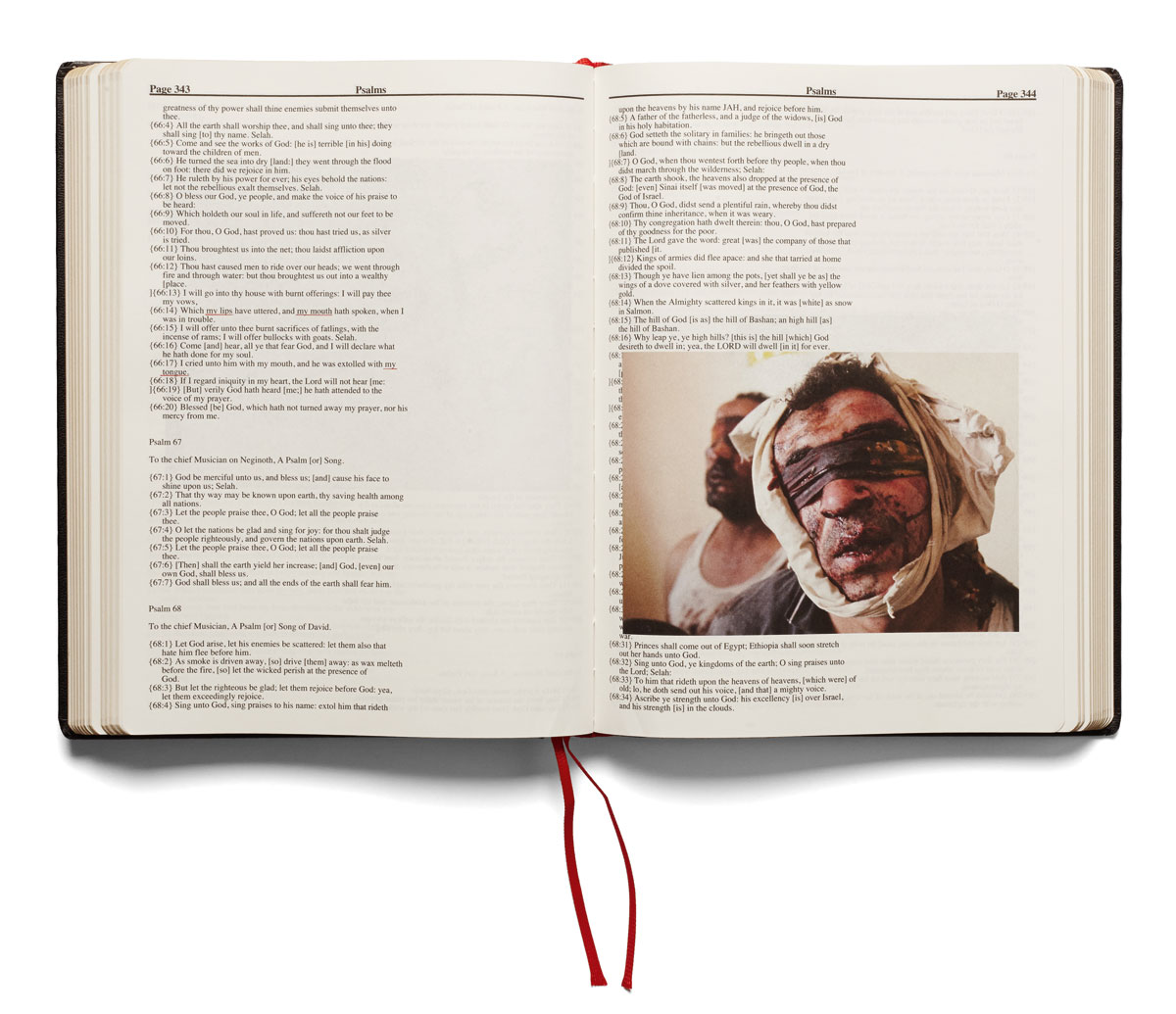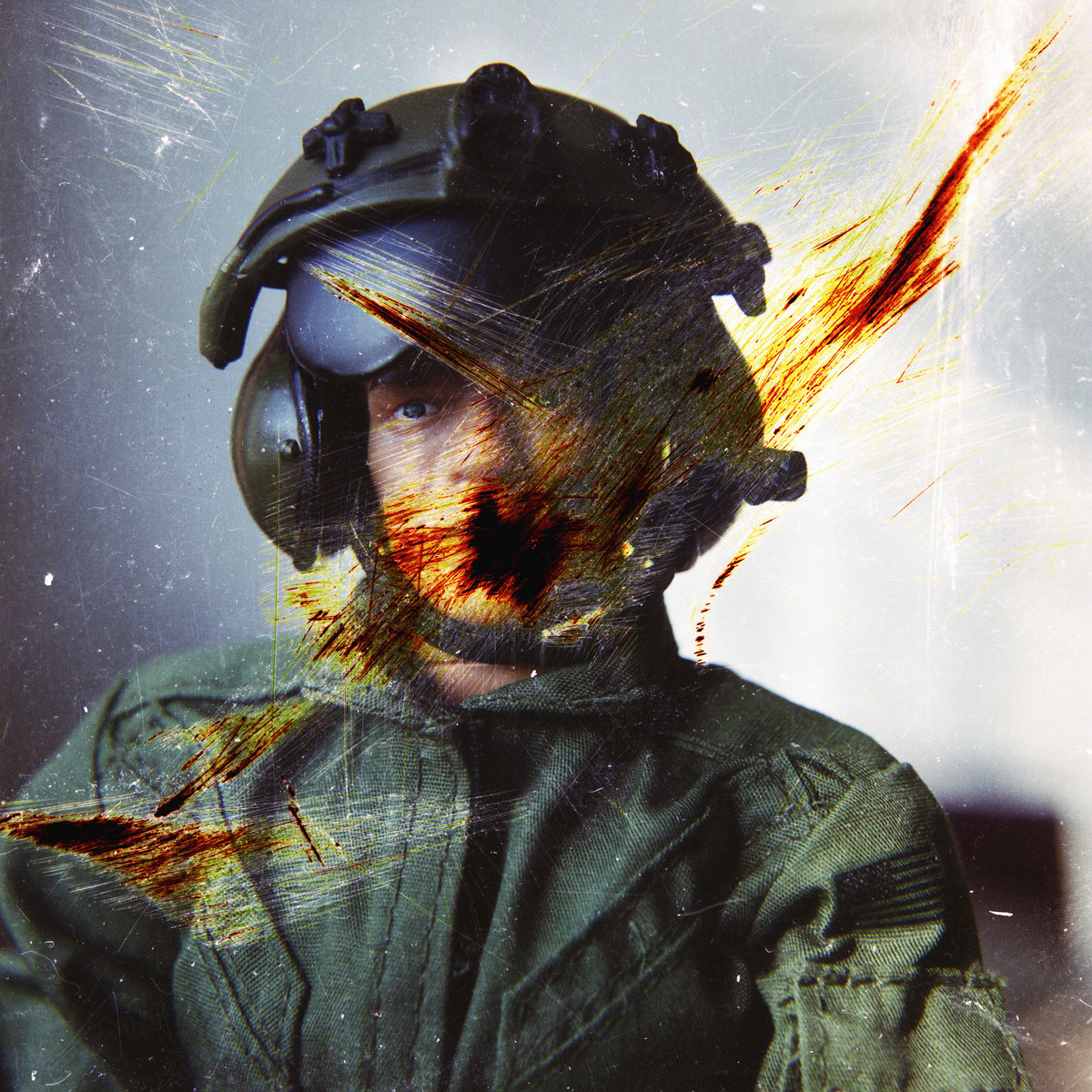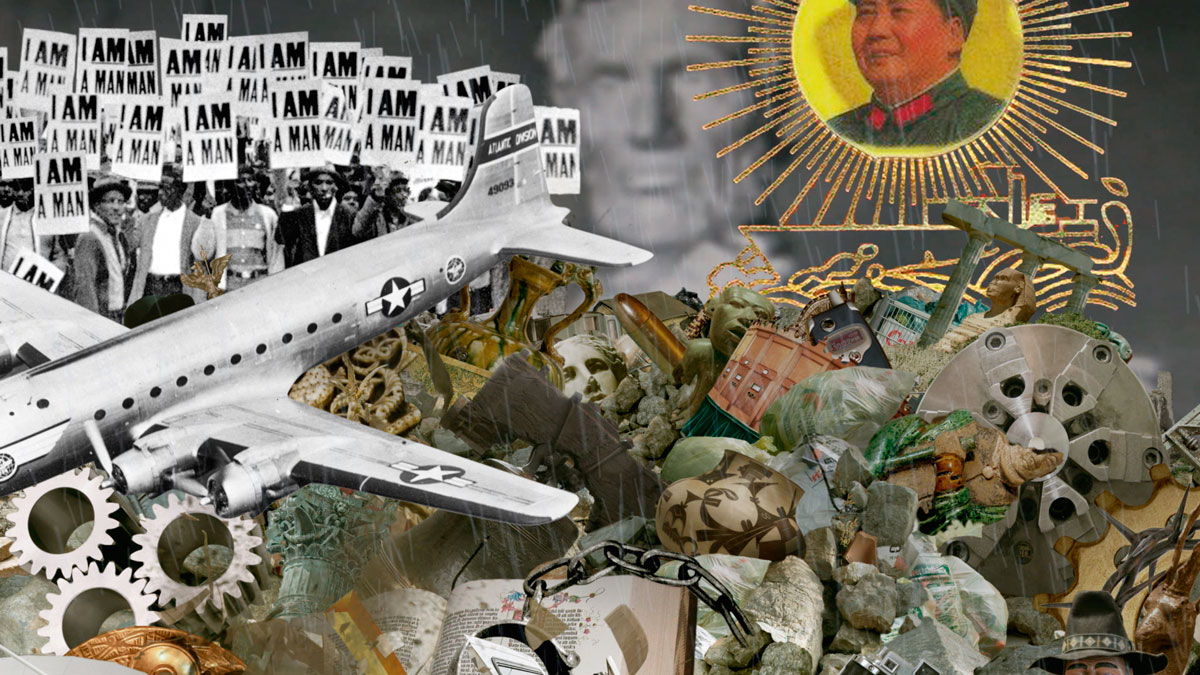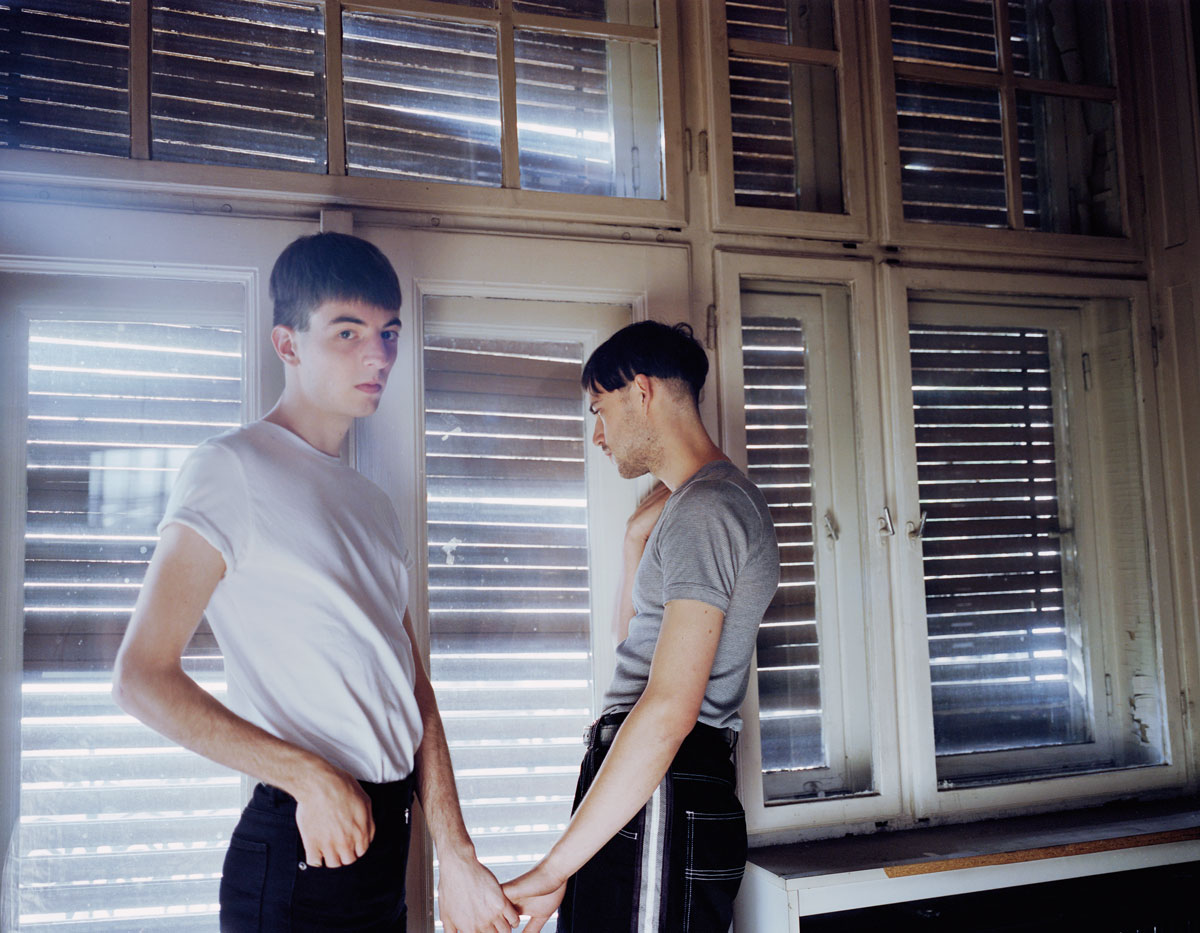Memory Lab at Martin-Gropius-Bau
Memory Lab: The Sentimental Turn. Photography Challenges History
How do photographers and artists today represent historical events, defining cultural characteristics and the changes they undergo, and social relations? How is memory formulated, and how do we resist forgetting?
Over the past two decades, a type of photography has established itself that openly rejects the long-prevailing principles of documentary photography and photojournalism. The photographers counter strategies based on objectivity and objective visualization with an emotionally charged eye. The operative factor here is a professional, deliberate gaze that is also investigative and open to fascination.
Sentimentality usually brings gestures of empathy, nostalgia, and deep emotion to mind; it’s a perception that contrasts with the rational worldview and blurs our understanding of its structures. The concept of the sentimental used here is connected to a critical artistic practice and is quite different: the emotional is viewed as a communicative tool in order to attract attention, to voice an appeal, and to elicit strong reactions in the viewer.
The artists selected by the Month of Photography Berlin together with the European partner cities for the joint exhibition MemoryLab seek to stir things up with their images, to involve the viewer. They want to break history open and analyze it with emotional competence. They work in essay form, developing photographic series and narrative videos.
Duration: Oct 17 - Dec 15, 2014
Location: Martin-Gropius-Bau, Niederkirchnerstraße 7, 10963 Berlin
Free Admission.

Antoine d'Agata
*1961 in Marseille, lives in France and elsewhere
Anticorps
Antoine d’Agata uses the stylistic tool of blurriness from movement, which renders his photographic encounters with the highly eroticised people he depicts physically palpable. Shot in Phnom Penh, Amsterdam, São Paulo, Vilnius, and Hamburg, the people portrayed become part of an interaction in which the artist doesn’t merely observe or take note of things, but appears to be completely involved. Blurriness becomes a guiding principle in an emotionally charged, ecstatic expenditure of energy that captures both the photographer and viewer. Yet despite this, these are harsh images of isolation and separation in the darkness of a room that is never entirely defined, images that bring to mind the paintings of Francis Bacon.

Broomberg & Chanarin
Adam Broomberg: *1970 in Johannesburg, South Africa; lives in London
Oliver Chanarin: *1971 in London; lives in London
Divine Violence
With Divine Violence, the artist duo Broomberg & Chanarin presents their multiple-award-winning book project Holy Bible (2013) as an autonomous orchestrated piece. Identical to a Bible on the outside with its black binding, thin printing paper, and gilt edge, the inside of the book is an illustrated narrative of human existence based on biblical stories. The sequence features images of power, scenes of extreme violence, sexuality, dominance, acrobatics, photographs of clairvoyants and magicians, and numerous other illustrations, many of them shocking. The power of the images overlays the text; words and text passages are underlined for emphasis, giving rise to a meta-narrative that brings the wide array of human ideas and skills – their evil consequences, constraints, and catastrophic results – into a tense relationship with divine faith and its determinism.

Attila Floszmann
*1982 in Budapest, lives in Hungary
Silence After the Revolution
Attila Floszmann used Polaroid film for the photographs he took in Libya after the violent uprising against Muammar al-Gaddafi and his followers (2011). For his series Silence After the Revolution (2011–2013), he used an old Polaroid SX-70-camera and a Polaroid 600 film, which reacted to the extreme weather conditions in the desert in a unique way. In this intensely intimate, small-scale medium, the relics of war and the images of ruins in the monotonous landscape take on an oddly aesthetic appearance due to the instant photo material’s slightly out-of-focus, refined-looking softness, the result of the desert climate. The war is over; in a new everyday reality, the rubble, as though conserved, will continue to remind people of the fighting for a long time to come.

Vera Frenkel
*1938 in Bratislava, Czechoslovakia, lives in Toronto
The Blue Train
In The Blue Train (2012) – a complex ensemble of large screens, photographs, and tablet computers – Vera Frenkel addresses the story of her mother, who fled to London from the former Czech Republic in 1939 and was forced to cross countless borders since passing through German territory would have been too dangerous for her as a Jew. In the work, Frenkel creates a parallel to the memories of Werner Wolff, a Jewish photographer who emigrated from Germany to the US and then, as an American war correspondent in 1945, reported on his hometown of Mannheim, which had been destroyed. The two journeys through pre- and post-war Europe and the images connected to them are shown in close proximity in a large-scale simultaneous video presentation. They overlap and merge into one another like palimpsests to form exemplary motifs; they repeat, vanish, and reappear in the form of memory shreds of events that have been written or passed down orally. In 32 short films, Frenkel condenses observations and creates typical scenes from everyday occurrences during the fictional train journey. The Black Star Historical Black and White Photography Collection and the Werner Wolff Archive (both owned by the Ryerson Image Centre, Toronto) provided Frenkel with image and text material.

Nan Goldin
*1953 in Washington, D.C., lives in New York and Paris
Scopophilia
In Nan Goldin’s evocative video work Scopophilia (2010) – the love of looking – she combines photos of paintings from the Louvre with very personal pictures of her friends from more than 35 years of artistic work. Accompanied by a compelling soundtrack, the American artist contrasts poses and gestures; in the process, she develops an aesthetic of closeness, friendship, gallantry, and love that she rediscovers both in painting and sculpture and in the moments her own works arise. It is an ongoing sequence of pathos formulae; in recording these, she inscribes photography and her subjects into the centuries-old art treasures while also emphasising their individuality. Scopophilia was made in the framework of the exhibition project Les Visages et les Corps, conceived in 2010 by the director Patrice Chéreau. Nan Goldin was given the opportunity to spend as much time as she wished in the galleries of the Louvre.

Stephanie Kloss
*1967 in Karlsruhe, lives in Berlin
Bei Otto
In her work Bei Otto (2010/2014), Stephanie Kloss traces a history of sexual abuse in the idyllic images of hotel and holiday grounds on the island of La Gomera. Following the 1986 nuclear catastrophe in Chernobyl, El Cabrito, a former banana plantation, served the Viennese action artist and painter Otto Mühl and the commune he founded in Vienna in 1970 as a home for an alternative form of communal living. Traditional patterns of relationships were abandoned; the collective was the only thing that mattered. Community was structured by ‘free’ love among partners that were ordained from above. In 1991, Mühl was sentenced to prison for child abuse within the commune. Equipped with this historical background knowledge, Kloss’s motifs come across as crime scenes and the photos as potential evidence of abuse. Today, the location is reserved for luxury tourism; there is nothing to remind visitors of the holiday paradise’s poisoned past.

Marko Lipuš
*1974 in Eisenkappel/Železna Kapla, lives in Vienna
Kratzungen Echte Spielfiguren
In his work Kratzungen Echte Spielfiguren (Scratches Genuine Playing Pieces, 2010–2012), Marko Lipuš scratches the photographic negatives of toy soldiers dressed in various different soldiers’ uniforms; in presenting the photographs as though they were damaged found material, he introduces an artificial ageing process to emphasise the injury and mangling the human body undergoes in war.Lipuš implements tricks in orchestrating the pathos of the military pose; through an ironic use of plastic figures, he demystifies the role of the soldier in the postmodern society.

Klaus Mettig
*1950 in Brandenburg, lives in Düsseldorf and Berlin
Vor dem Licht
In 1985, during a longer stay in Moscow, Klaus Mettig photographed the city on a daily basis. As a Western foreigner, he was under constant surveillance and was prohibited from photographing state insignia, government buildings, and military facilities. The images in his series Vor dem Licht 1985 (Polarisation) (Before the Light 1985 (Polarisation)) were made secretly on self-developing film. From these images, he enlarged cropped sections and organised them according to motif, colour, and structure, presenting them as simultaneous slide projections. An intense photographic treatment of the original material enhances the hallucinatory effect, which brings fuzzy, feverish dream images to mind. Passersby, slogans, television images, birch forests, the Red Star, flags, monuments, and satellite towns come together to form an iconography of the USSR reflected through private impressions.

Andreas Mühe
*1979 in Karl-Marx-Stadt, lives in Berlin
Obersalzberg
Andreas Mühe recreates the poses of Nazi luminaries using a collection of costumes painstakingly recreated from recent Nazi and Wehrmacht films. The settings of his portraits are the Berchtesgaden countryside with its Alpine idyll, which was already exploited for propaganda purposes during Adolf Hitler’s era. The models for his complex photo series Obersalzberg (2011–2013) are the colour photographs of Walter Frentz (1907–2004), which remain largely unknown to this day. Frentz was Leni Riefenstahl’s cameraman; he later became a war correspondent for the Deutsche Wochenschau and was a member of Hitler’s innermost circle. In his reconstructions, Mühe disrupts the propaganda motifs by changing the images’ proportions, implementing stark lighting and contemporary faces, or through unexpected interventions, such as figures urinating at the centre of the picture. Mühe succeeds in exploring the fascination for power emanating from these colour photographs; at the same time, he also pokes fun at the historical and docudrama genres whose machinery of illusion is supposed to bring us closer to everyday Nazi life.

Erwin Olaf
*1959 in Hilversum, Netherlands, lives in Amsterdam
Berlin
Erwin Olaf steeps the scenes in his carbon prints in dark monochromatic tones, conjuring historical-seeming backgrounds against which persons and objects stand out in relief form. For his Berlin series, he took photographs in the former sport arenas of the 1936 Olympic games and created strange tableaus featuring odd figures in the restored interior of the Logenhaus Berlin, including children in leather uniforms, a muscular African American decorated with medals, and an older, witch-like woman. To us, the images evoke a bleak and distant world in which children and old people alike are evil: aggressive, smug, and malevolent – the descendants of Nazis. Originally, the African American track athlete Jesse Owens refused to take part in the 1936 Olympic games in protest against the discrimination of Jews and people of colour in Germany. In the end, he won four gold medals, became the most successful athlete of the Olympics, and threw a wrench into the carefully planned orchestration of Aryan superiority.

Trevor Paglen
*1974 in Camp Springs, Maryland, USA, lives in New York and San Francisco
The Other Night Sky
Trevor Paglen has been photographing a dangerous manmade heaven for many years that doesn’t at all correspond to the firmament and twinkling stars exalted by religion and mythology. Today, the universe is filled with news and surveillance satellites. Paglen isn’t interested in comets and shooting stars, but instead in the things we’ve launched into space, aligning his camera with their exact coordinates. In Paglen’s astro-photographs, clandestine American space vehicles can be seen against a background of stars, constellations, and cosmic fog. It required technically experimental, laborious research to reveal what has been kept secret at the highest levels. Paglen presents us with visually powerful, seductive photographs of a world marked by NSA espionage and space debris – the remnants of the progress of the past six decades – and redefines our cosmos as The Other Night Sky.

Aura Rosenberg
*1949 in New York, lives in New York and Berlin
The Angel of History
In Aura Rosenberg’s video collage The Angel of History (2013), human inventions and cultural achievements since the dawn of mankind appear in apparent chronological order and then burst apart the very next moment. In presenting the evolution of culture as a sequence of destruction resulting in the rubble heap of our civilisation, she is framing a reference to Walter Benjamin and his description of Paul Klee’s drawing Angelus Novus (1920). In accord with Benjamin, the artist defines history as a conglomeration of catastrophes. Rosenberg evocatively translates the vertical motion of the piling up of debris and the horizontal motion of the future’s pull into dynamic scenes, lending them rhythm with a powerful soundtrack. The force of the unceasing image sequence also speaks of her position toward and fears concerning the reality surrounding us: a throw-away society in which sustainability is paid lip service, but usually not much more. Rosenberg succeeds in presenting the course of history as shock – a shock that overcomes us and incites us to act.

Anna Charlotte Schmid
*1984 in Essen, lives in Berlin
The Other Side of Venus
In her classically styled series The Other Side of Venus (2011–2012), Anna Charlotte Schmid portrays queer young men in Budapest whose freedom is severely restricted by state repression. What stands out most are their hairstyles and clothing, which serve as signs of recognition in a society where direct attempts at contact can lead to immediate reprisal. To orchestrate the restlessness, vulnerability, and homelessness of her protagonists, Schmid uses clever lighting and precisely chosen, often transitory places such as corridors and building entrances, or symbolic-seeming backgrounds such as abandoned factories or Venetian blinds closed to the outside.

Tomáš Šoltys
*1985 in Prešov, Slovakia, lives in Vienna
Man on the River
Tomáš Šoltys’s panoramic video images in Man on the River (2011) show the artist engaged in a performance in which he stands on a float drifting slowly down the Danube and Morava Rivers. The action took place on April 29 and 30, 2011. The act of balancing and the danger of being pulled under by the current are overshadowed by a contemplative view of the river landscape and the slowly passing background of city and industrial architecture. Šoltys remains an entranced but lonely observer of the scene. His passive stance is reminiscent of the appearance of the angel in Rosenberg’s historical collage. A perspective on history and on Europe’s progress also arises here in Bratislava, beneath the bridges spanning the Danube. The individual remains strangely detached in this parable of pathos and alienation.

Nasan Tur
*1974 in Offenbach, lives in Berlin
Bautzner Straße 112A
In his work Bautzner Straße 112A (2009), Nasan Tur took photographs of prison cell doors in the East German Ministry for State Security/Office for National Security in Dresden. The images serve as relics of oppression and the widespread surveillance of everyday life. Tur presents the photographs in a narrow, windowless room built specially for the purpose, which corresponds exactly to the dimensions of a cell in the former prison. Inside, one can feel the straits of solitary confinement; the images of prison cells evoke feelings of claustrophobia and repression that are further underscored by the haptic experience of the room. The cell has been reconstructed true to scale and palpably conveys hegemony, powerlessness, and despotism as it was experienced in the GDR and continues to be experienced in prisons today – because cell doors look everywhere the same.

Pablo Zuleta Zahr
*1978 in Viña del Mar, Chile, lives in Berlin
Puppies in Torture Chambers
The photographs of Pablo Zuleta Zahr portray Chilean schoolchildren in the underground ruins of a former secret interrogation prison of Pinochet’s junta. Fort Borgoño, part of the military base in Talcahuano, was used as a torture camp from 1973–75 and 1984–85. The children explore the abandoned rooms; they are confronted with a history they don’t understand, but seem to nonetheless sense. Curiosity, uneasiness, fear, shock, but also adventure, playfulness, and a discoverer’s spirit can be read in their faces, gestures, and movements among the shadows of the ruins. The images convey the haste, nervousness, and excitement of the boys and girls, who perhaps absorb something of the pain and suffering of the place, of the horrors experienced by people whose political opinions did not fit in with the dictator’s reactionary idea of society. With great emotion, the artist observes a very young generation and the way it approaches today the political trauma of the 1973 military coup and the time of oppression that followed, which lasted until 1990.
